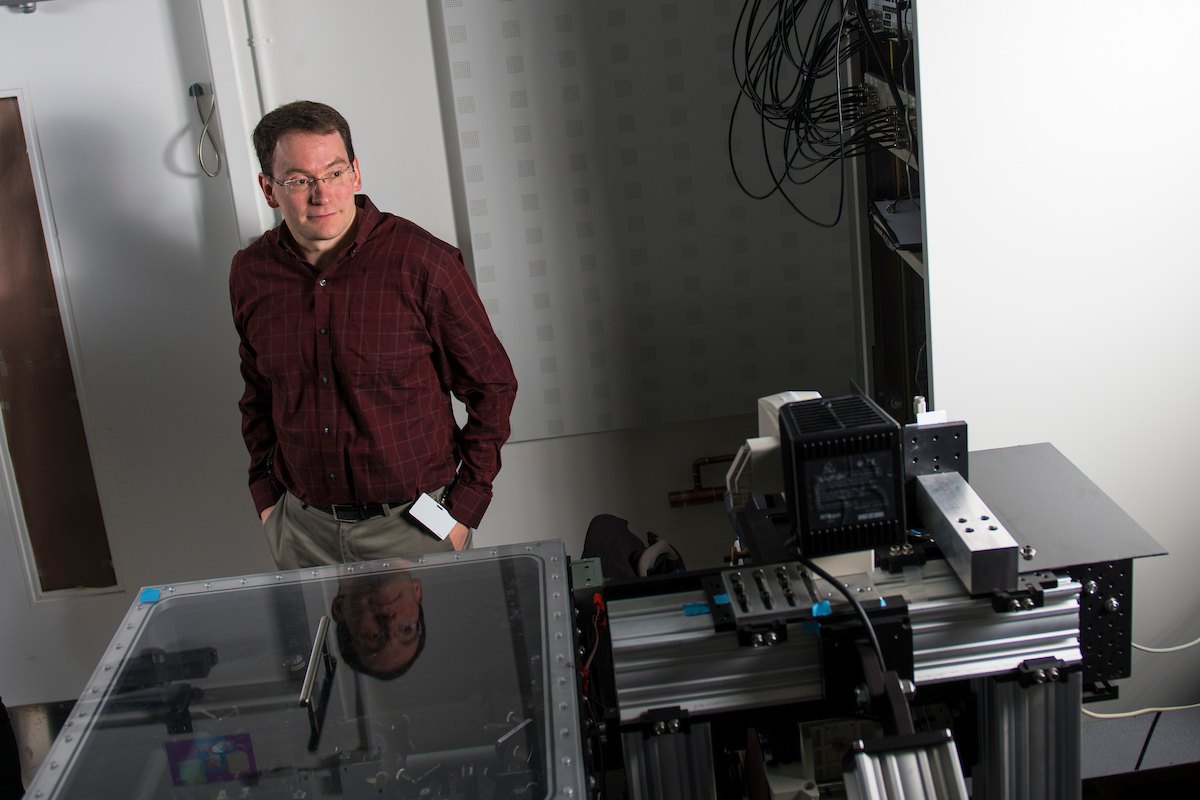
Michael Woodside, professor in the Department of Physics, is leading research that could combat numerous diseases including West Nile Virus, SARS, HIV, and Japanese Encephalitis. Photo credit: John Ulan
For most people, mosquito bites are just plain annoying. For others, however, that itchy bite can become deadly if they were attacked by an infected mosquito. With no current treatment or vaccine, West Nile Virus has long been the source of scientific mystery.
Michael Woodside—a biophysicist from the University of Alberta's Department of Physics -is working to change that. Woodside has been working with his students and postdoctoral researchers for nearly a decade on discovering how viruses manipulate the cells they infect to produce proteins needed for the virus to propagate.
Many viruses like West Nile, SARS, and HIV insert structures into their genomes that can cause infected cells to change how they read the viral genes, so that the same piece of RNA can make more than one protein. Attacking this 'recoding' process can disrupt the propagation of the virus, but until now, how the recoding process is triggered has been unclear.
Using very sensitive measurements with bespoke atomic-scale laser tweezers to probe the structures formed by viral RNA, Woodside and his colleagues studied the way the RNA responds to tension, mimicking what happens when infected cells read the viral genome.
The scientists discovered that it is dynamic changes in the RNA structure that trigger the recoding, rather than the static properties of the structures.
"Interrupting this protein production process of West Nile Virus with a drug could provide a way to reduce the virus infectivity," said Woodside. "With these new findings, we can now make informed mechanistic choices to target the drug discovery process better."
And beyond leading toward potential therapies for West Nile Virus, the findings may be extended to other diseases that function in a similar manner, such as Japanese encephalitis, SARS, and HIV.
"It's always exciting as a physicist to be working on things that are relevant to daily life," said Woodside. "There are a lot of questions that still need to be solved."
The findings, "Complex dynamics under tension in a high-efficiency frameshift stimulatory structure," were published in the prestigious peer-reviewed publication Proceedings of the National Academy of Sciences.